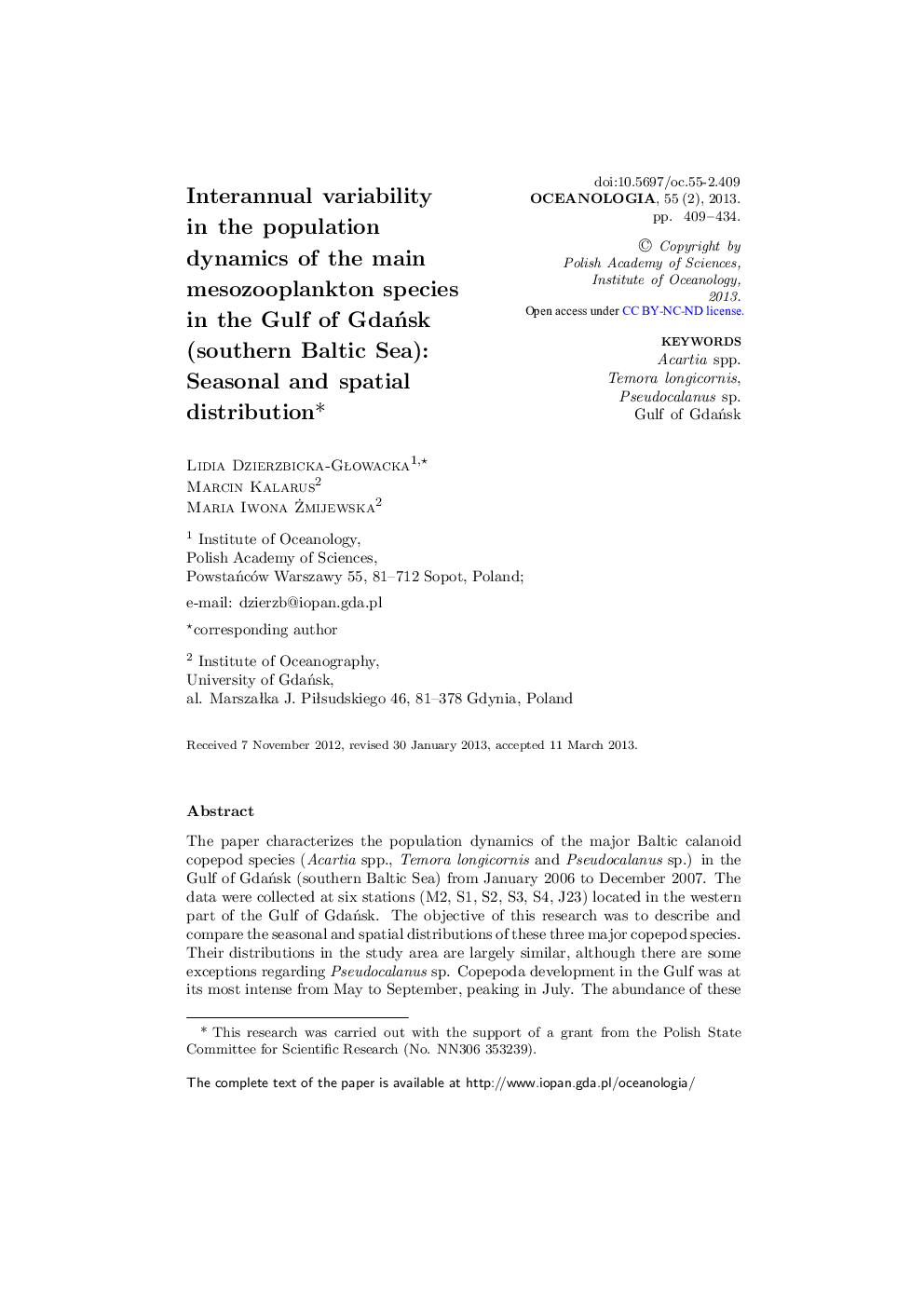| Article ID | Journal | Published Year | Pages | File Type |
|---|---|---|---|---|
| 2069849 | Oceanologia | 2013 | 26 Pages |
The paper characterizes the population dynamics of the major Baltic calanoid copepod species (Acartia spp., Temora longicornis and Pseudocalanus sp.) in the Gulf of Gdańsk (southern Baltic Sea) from January 2006 to December 2007. The data were collected at six stations (M2, S1, S2, S3, S4, J23) located in the western part of the Gulf of Gdańsk. The objective of this research was to describe and compare the seasonal and spatial distributions of these three major copepod species. Their distributions in the study area are largely similar, although there are some exceptions regarding Pseudocalanus sp. Copepoda development in the Gulf was at its most intense from May to September, peaking in July. The abundance of these species was the least at the shallowest stations. Based on these results, the weighted mean depth WMD per developmental stage was calculated for Pseudocalanus sp., Acartia spp. and T. longicornis. The paper also compares the abundance (in indiv. m− 2) of the copepodite stages of these species in two regions of the Baltic the abundance of these copepodite stages (∑ CII-CVI)ein the Gulf of Gdańsk in 2006 was similar to that in the Gotland Basin in the mid-1990s; in spring/summer 2007, however, their abundances were significantly higher (ca 2–4 times) in the former region.
